Voice Lessons
What do Voice Lessons Include?
Vocal Registration Map - Male & Female
At the very first lesson, we will determine where you are on the map. What's your highest note and what's your lowest note. We'll also discuss your goals for the range you desire beyond your current tessitura.
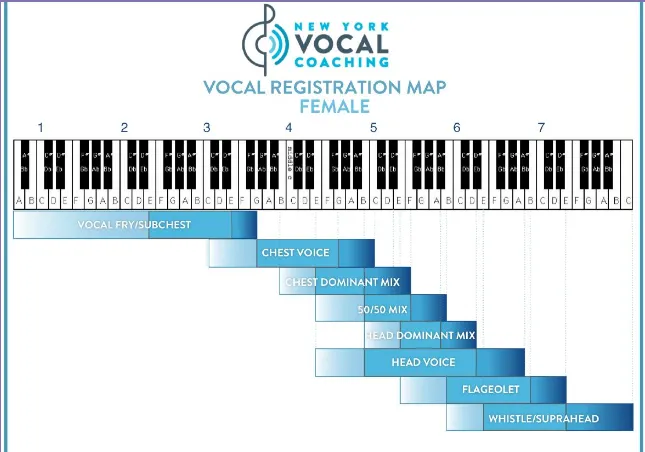
Vocal Development Example - Teen / Adult
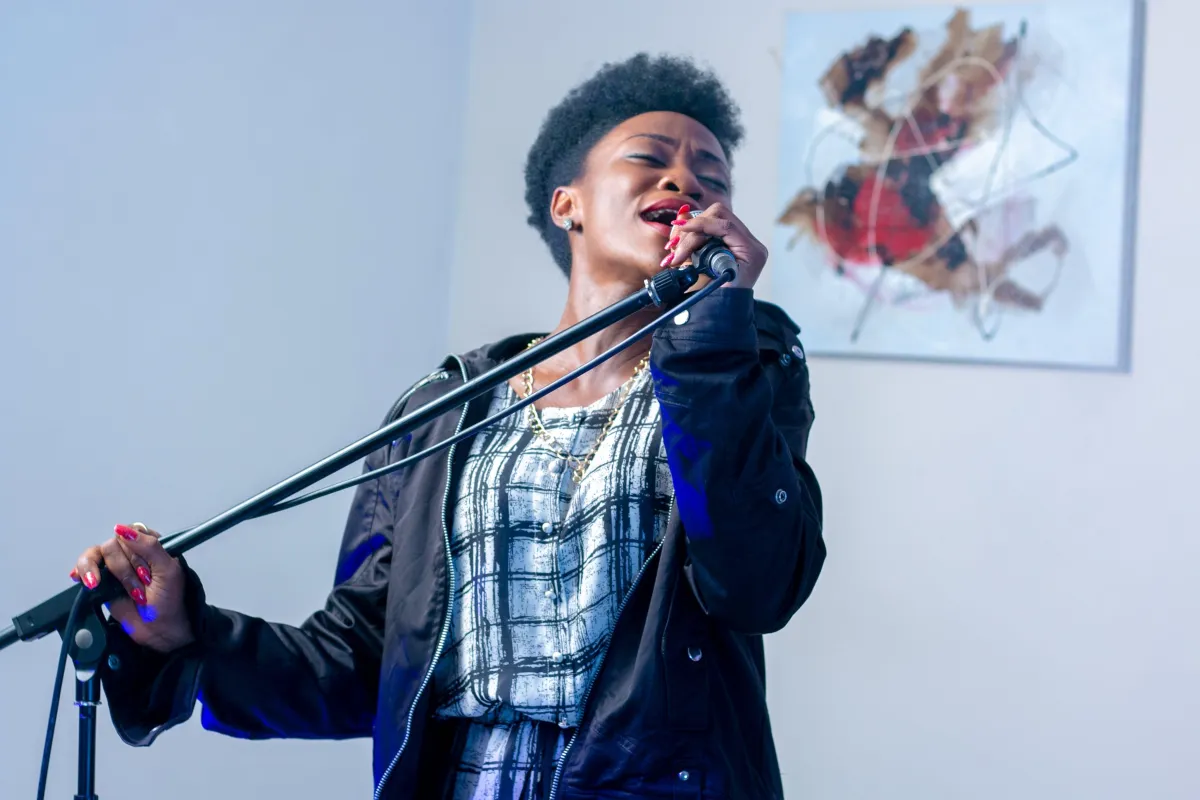
Note: This is only one example. Warm-ups, Exercises and Stretches are changed each week to customize the sound capabilities for the singer.
Beginning with lip trills as a vocal warm-up, we quickly move on to a "hwoon" stretching exercise. After determining the goal of the singer to develop the "sound" they desire for a specific song they're working on, we will do exercises for the chest voice or chest dominant mix, trying to stay out of fry until the very end. This develops vocal cord control.
To accomplish the goals, we may go into voiced plosives that include twang "gagg" on an interval of 151 with a high larynx on the low notes. Then we'll do a voiced plosive such as "bwihb" on an interval of 8351 to develop a louder (non-airy) strength as they come down the upper range into their chest dominant mix.
The more blending of the register work that is done, the better the singer can create the desired sound and range in many different genre and styles of music.
Child Vocal Development

Note: This is only one example. Warm-ups, Exercises, and Stretches are changed each week to customize the sound capabilities for the singer.
After a quick warm-up singing "mum" on a 123 interval pattern, we will sing sounds with the animals, such as the hissing snake, to develop proper breath control. Then we move on to the hoot owl going up and down their range to mark the date of their current tessitura on their Vocal Registration Map to determine future growth.
We also discuss throughout the lessons about singing through colds and congestion, and how to properly care for the vocal cords.
Much work is done in allowing the children to sing from their hearts as any character they wish to be in the moment. We explain the Vocal Registration of High, Low, and the Ability to Blend them, and then work on the chest to develop a strong bottom of their voice, the head voice for stretching, and the mix for blending between the registrations.
This becomes second nature for children, and their ability to cross genres and music styles become much easier for them as they mature.
What are Voice Lessons Like?
NOTE: Parents are welcome to attend lessons and sit in the designated sitting area. There are no toys for the siblings but they can bring their own toys to play quietly in the sitting area with a parent present.
Studio props are for the music student only.
Voice Lessons are engaging and fun, including the elements below in most every lesson:
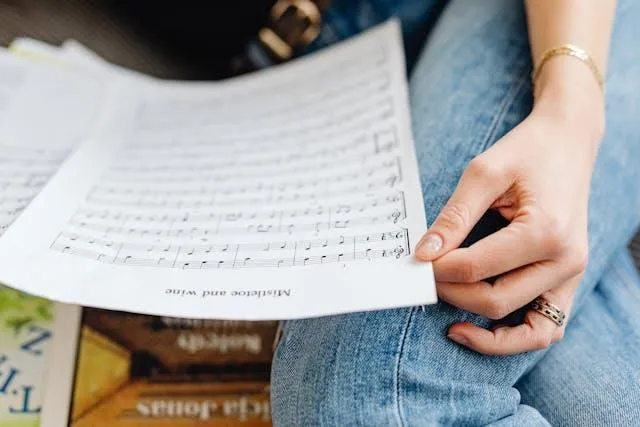
Music Selections:
3 Types of Music to Learn:
1. FUN, Short, or Majestically Easy songs (1-3 pages), teaching specific music elements. These selections will have MP3 backing tracks to listen to AND sing along with. We also try to add a "brain break" coloring worksheet to the mix while students LISTEN to music played. They're truly "learning" while "listening".
2. LONGER, FOCUS, SKILL-BUILDING songs (3-4 lines) give more practice for memory retention of the newly learned music elements. These selections can also have MP3 backing tracks to LISTEN to at first, AND THEN sing along with.
3. REPERTOIRE (list of songs) pieces with emphasis on Dynamics, Mood, & Expression can be presented for family/friends concerts. These pieces will have MP3 tracks for “listening” only. Your musician will sing the piece fully by themselves without a backing track.
Costumes
Children love to pretend to be someone else when singing! And they have tons of fun doing so! So, for ages 11 and below, we have a few costume items and invite students to bring their own dress-up props. Who knows, a friendly, colorful parrot just might pop in to take a listen to the marvelous sounds happening!
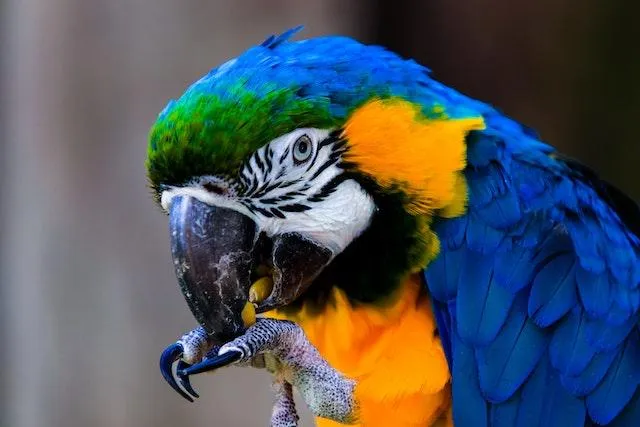
Vocal Fry
This dear student kept going until she was smoothly playing the familiar tune across the keys. When students have physical challenges, we make special arrangements of the songs to get the best interpretation, but with fingering that doesn't cause uncomfortable side effects. She did great!
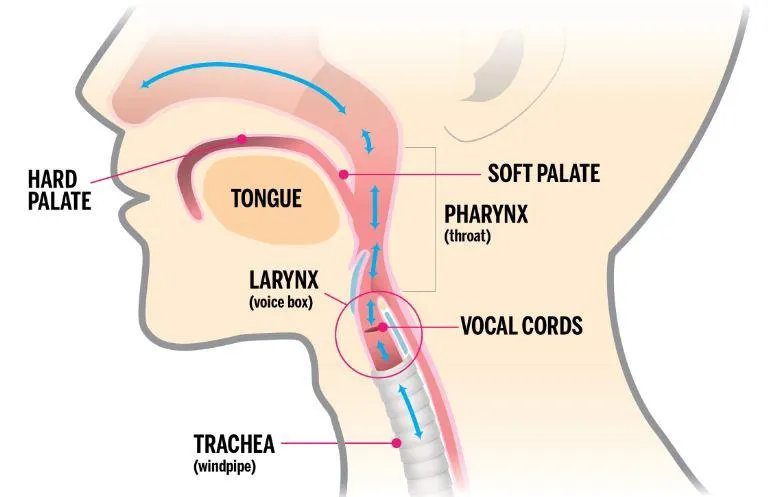
Warm-up & Stretching
No, this is not body calisthenics. The vocal cords need to warm up and stretch safely and regularly to meet the demands of the range of some songs; thus, producing a strong tessitura for the individual.
Click on the picture below to hear a live demo on SoundCloud of a "Warm-up & Stretching" taking place in Rebecca's voice lesson with mentor Justin Stoney of the New York Teacher Certification Program.
Belting
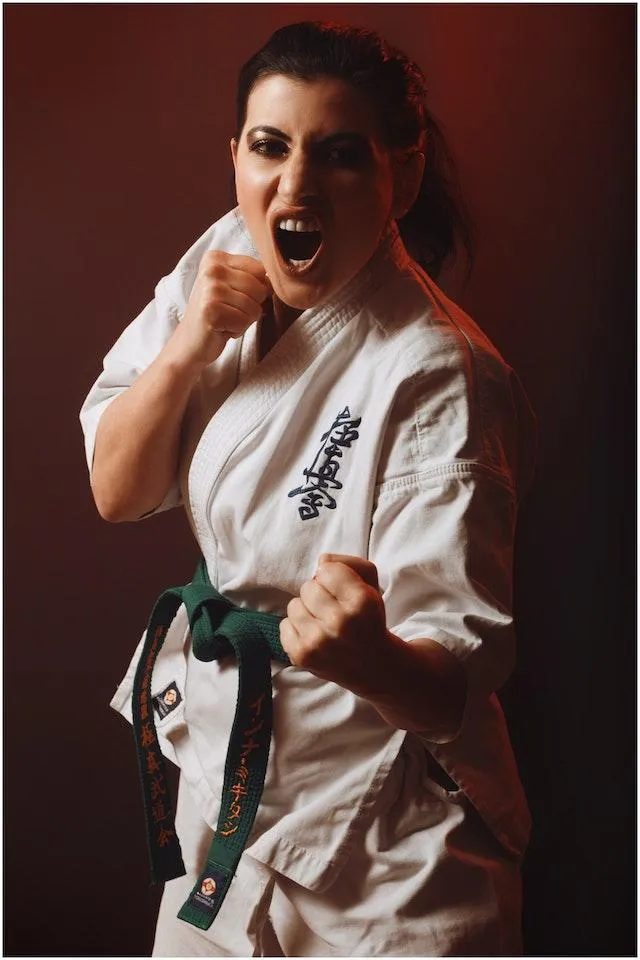
No, it's not karate chops.
But "YES", chest voice is celebrated and developed to reach the widest range, or tessitura, possible.
Flageolet
No, this is not a woodwind flute.
Both male and females will stretch past their head voice and falsetto to discover their highest note range just before their whistle sound.
This stretching is necessary to strengthen their chest voice to give them the best flexibility possible.

Vocal Student Demonstration
When young students dress up as the character in the song and sing the sound they feel best suits the story in the lyrics, well, just about anything can happen.
And we love every minute of it, laughing and playing together as we learn about vocal technique.
Larynx Designed Movements
Creating a "Style"
I bet you didn't know you could move your larynx up and down. Yes, you have laryngeal elevators that raise your larynx and are responsible for opening your jaw and helping you swallow. Other muscles help lower the larynx and close the jaw. It's an amazing creation by God so you can talk and sing and swallow.
+3 Position
Different Positions - Different Style
The larynx has a neutral (our conversational tone), +1, +2, +3, and a -1, -2, and -3 positions. The larynx position is mainly responsible for a singer's style. Watch the video to hear the same student demonstrate her +2 position larynx position while singing a song about cactus.
Our example today is a young, female singer demonstrating the +2 Larynx position. Watch the video below to hear this remarkable demonstration of fun voice lessons.
Copyrights © 2025 All Rights Reserved | Sounds of Joy Music Studio under Jubilee Music & Publishing, LLC
Privacy | Terms & Conditions | Accessibility



Facebook
Instagram
LinkedIn
Youtube